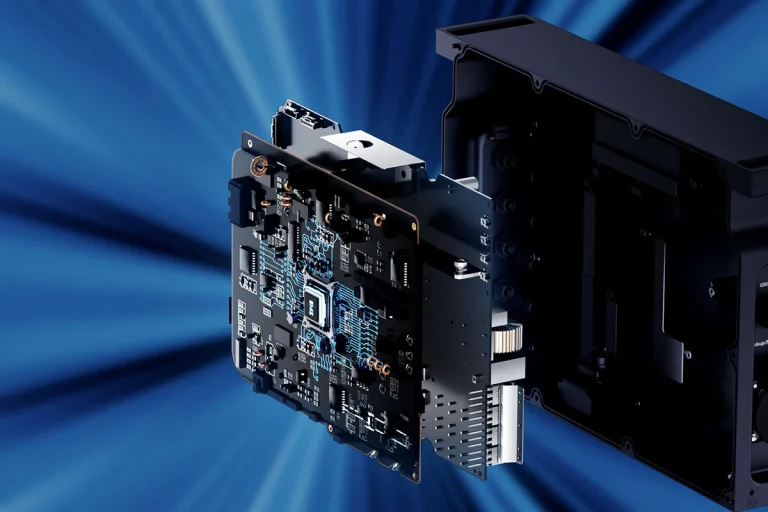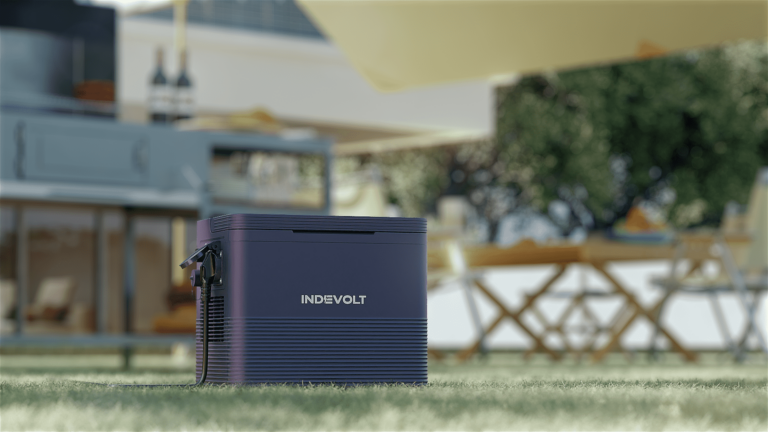How does a balcony solar power system with storage perform in different seasons?
A Balcony Solar Power System with storage is more than just a trend – it is a smart solution for sustainable energy generation and contributes to the energy transition. But how effective is such a system throughout the year? After all, there are significant differences in solar radiation between summer and winter, and spring and autumn also bring their own challenges and opportunities. In this article, we take a detailed look at how a Balcony Solar Power System with storage performs in different seasons, what advantages it offers and why storage such as the Indevolt BK1600 in particular optimises the system.
Why is a Balcony Solar Power System with Storage useful all year round?
Many people think that solar systems are only effective in summer. This is a common misconception. A Balcony Solar Power System with storage can make a contribution in every season – even when the intensity of solar radiation fluctuates. The key is the integrated storage unit, which temporarily stores excess energy and makes it available when needed. Whether on sunny summer days or cloudy winter days, a storage unit such as the Indevolt BK1600 ensures that you can make optimum use of the electricity generated.
Le rôle du stockage en toutes saisons
Sans stockage, une grande partie de l’énergie solaire est perdue, car l’électricité est directement injectée dans le réseau lorsqu’elle n’est pas immédiatement utilisée. L’Indevolt BK1600 stocke cette énergie et la met à votre disposition lorsque vous en avez besoin, même la nuit ou par mauvais temps. Cela augmente considérablement le taux d’autoconsommation, ce qui est non seulement durable, mais réduit également les coûts d’électricité.

How does a Balcony Solar Power System with Storage perform in spring?
Sunny days and moderate temperatures
Spring is the perfect season for many solar systems. The days are getting longer, solar radiation is increasing and temperatures are moderate – this means that solar modules can work efficiently without losing power due to overheating.
- Generation: In spring, an average balcony solar power system with an output of 900 watts can generate around 3–4 kWh per day.
- Storage: With a storage unit such as the Indevolt BK1600, you can use this energy in the evening when electricity demand at home is often higher.
Advantages of storage in spring
| Spring Advantage | Explanation |
| Storing Surpluses | Excess solar energy on sunny days is stored and used in the evening. |
| Optimal Efficiency | Moderate temperatures ensure high efficiency of solar modules and the storage. |
How does a Balcony Solar Power System with Storage perform in summer?
Maximum solar energy
Summer is the strongest season for a Balcony Solar Power System with storage. Solar radiation reaches its peak and the days are long. This means that your solar modules can produce an enormous amount of energy during the day.
- Generation: On a sunny day in summer, a 900-watt balcony power plant can generate up to 4–5 kWh of electricity.
- Storage: Without storage, you would feed this surplus into the grid – often without financial compensation. With the Indevolt BK1600, you can store it and use it later.
Challenges in summer
One challenge in summer can be overproduction. If you don’t have storage, you can’t use the surplus electricity. The Indevolt BK1600 solves this problem with its high storage capacity and efficiency.
| Summer challenge | How the Indevolt BK1600 helps |
| Surplus production | Stores surplus energy and makes it available at peak times. |
| High temperatures | Efficient temperature control prevents loss of storage capacity. |
How does a Balcony Solar Power System with storage perform in autumn?
Fluctuating conditions
Autumn brings shorter days and changeable weather, which makes energy production from a balcony power plant more challenging. Nevertheless, a Balcony Solar Power System with storage can still work effectively during this transitional period.
- Generation: On sunny autumn days, your solar modules can still generate 2–3 kWh per day.
- Storage: The storage unit ensures that no energy is lost, even in changeable weather.
Important functions of the storage facility in autumn
| Autumn advantage | Explanation |
| Time-based storage | The storage system can store electricity at favourable times and use it when needed. |
| Weather independence | Even in cloudy weather, the storage system can maximise the use of the electricity generated. |
How does a Balcony Solar Power System with storage perform in winter?
Less light, higher efficiency thanks to storage
Winter poses the greatest challenge for solar systems. The days are short, the sun’s rays are weak, and clouds often cover the sky. Nevertheless, a Balcony Solar Power System with storage can still be useful during the cold season.
- Generation: On a clear winter’s day, a 900-watt Balcony Solar Power System with Storage can generate around 0.6–1 kWh of electricity.
- Storage: The storage unit ensures that even this small amount of energy is not lost.
How the Indevolt BK1600 helps in winter
The Indevolt BK1600 is specially designed to work efficiently even in challenging conditions. Its AI-supported optimisation ensures that energy is used intelligently, e.g. through time-based tariff control.
| Winter challenge | How the Indevolt BK1600 helps |
| Low generation | Maximises the use of even small energy yields through intelligent storage. |
| High grid electricity prices | Time-based tariff control saves costs by storing electricity at favourable times. |
Technical overview: Balcony Solar Power System with Storage in different seasons
The following table shows how a Balcony Solar Power System with Storage works in different seasons and what advantages the Indevolt BK1600 offers.
| Saison | Production d’énergie (kWh/jour) | Utilisation du stockage | Avantages de l’Indevolt BK1600 |
| Printemps | 2–4 | Stockage des excédents pour une utilisation le soir | Haute efficacité à des températures modérées |
| Été | 4–5 | Évitement des pertes d’énergie par surstockage | Contrôle de température efficace et grande capacité de stockage |
| Automne | 2–3 | Utilisation maximale malgré des conditions météorologiques changeantes | Gestion tarifaire basée sur le temps et utilisation indépendante des conditions météorologique |
| Hiver | 0,5–1 | Stockage de petites productions d’énergie et économie de coûts par optimisation tarifaire | Utilisation de l’électricité du réseau pour compenser la pénurie de courant photovoltaïque en hiver |
Table 1: Behavior of a Balcony Solar Power System with Storage in Different Seasons
Why the Indevolt BK1600 is indispensable
The Indevolt BK1600 stands out from other storage systems with numerous advantages. It particularly shines when used in conjunction with a balcony solar power plant throughout the year.
Key Advantages of the Indevolt BK1600
- Bidirectional support: Enables both charging and discharging for maximum flexibility, allowing it to adapt to varying energy supply and demand scenarios (e.g., storing surplus solar power during the day and discharging it in the evening).
- Time-based tariff control: Reduces electricity costs by charging the storage system during periods of lower electricity prices, then using the stored energy when grid tariffs are higher—optimizing cost savings.
- High efficiency: Boasts a PV conversion efficiency of over 97%, minimizing energy losses during the process of converting and storing solar power, thus maximizing usable energy output.
- Easy installation: No professional personnel required, making it perfectly suited for balcony solar power plants—residents can set it up independently without complex technical expertise.
- Lightweight and compact: Saves space on the balcony (a critical factor for small urban balconies) and is easy to transport, enhancing its practicality for rental properties or users who need to relocate the system.
Frequently asked questions (FAQ)
1. Does a balcony solar power plant with storage work in winter?
Yes, a balcony solar power plant with storage can still generate electricity in winter. The storage unit ensures that even small amounts of energy produced (due to weaker sunlight and shorter days) can be utilized instead of being wasted.
2. Why is a storage unit like the Indevolt BK1600 important?
Without a storage unit, excess electricity generated by the balcony solar plant is lost—either fed into the grid with little to no compensation or unused. The Indevolt BK1600 stores this surplus energy and makes it available when you need it, regardless of the season, maximizing self-consumption and reducing reliance on grid electricity.
3. Is installing the Indevolt BK1600 complicated?
No, the Indevolt BK1600 is a plug-and-play system that does not require professional installation. Simply connect it to your balcony solar plant following the user manual, and it is ready to use—no specialized technical skills are needed.
4. How much electricity can a balcony solar power system with storage generate in summer?
A 900-watt balcony solar power plant can generate up to 4–5 kWh of electricity per day in summer (when solar radiation is at its peak). With a storage unit like the Indevolt BK1600, you can optimize the use of this electricity by storing surplus power for evening or nighttime use, rather than feeding it into the grid.
5. Can I save costs by using a storage unit?
Yes, using a storage unit increases your self-consumption rate (the share of solar electricity you use yourself), which directly reduces the amount of expensive grid electricity you need to purchase. Additionally, the Indevolt BK1600 offers features like time-based tariff control—allowing you to charge the storage during low-tariff periods and use stored energy during high-tariff periods—to further cut costs.
Conclusion: A Balcony Solar Power System with Storage Is a Worthwhile Investment Year-Round
Whether it’s spring, summer, autumn, or winter—a balcony solar power plant with storage is a sustainable and cost-effective solution for using eco-friendly electricity throughout the year. The Indevolt BK1600 makes your system even more efficient by minimizing energy losses, maximizing the self-consumption rate, and reducing costs. Especially in times of rising electricity prices, this is an investment that pays off—for both your wallet and the environment.





